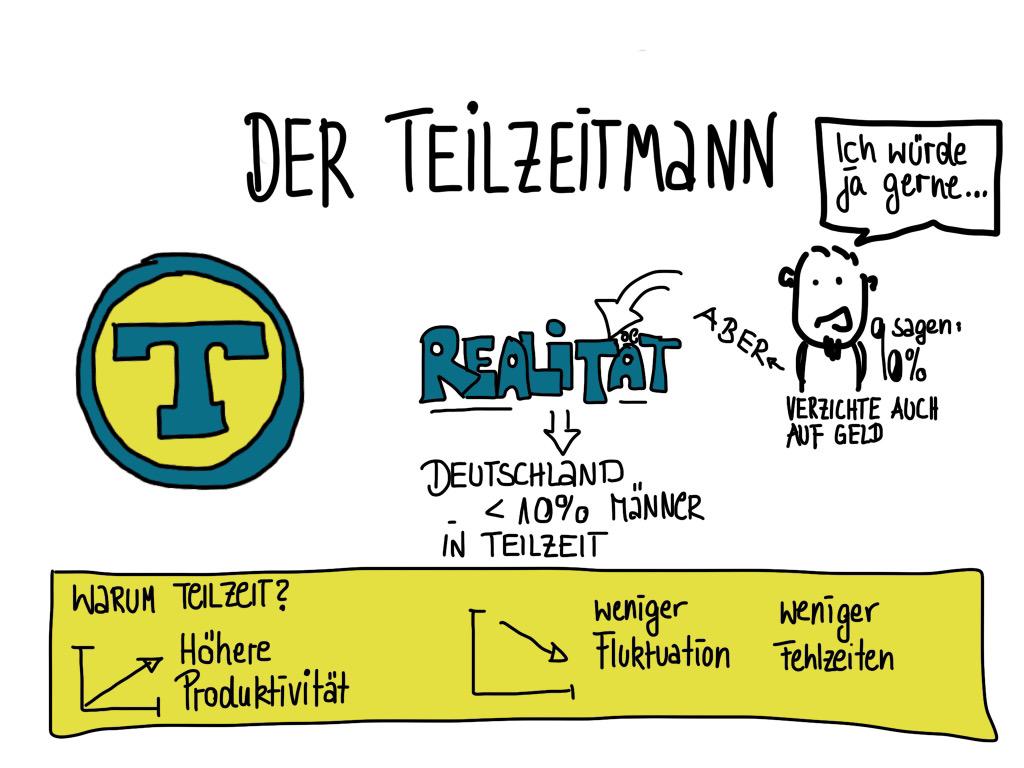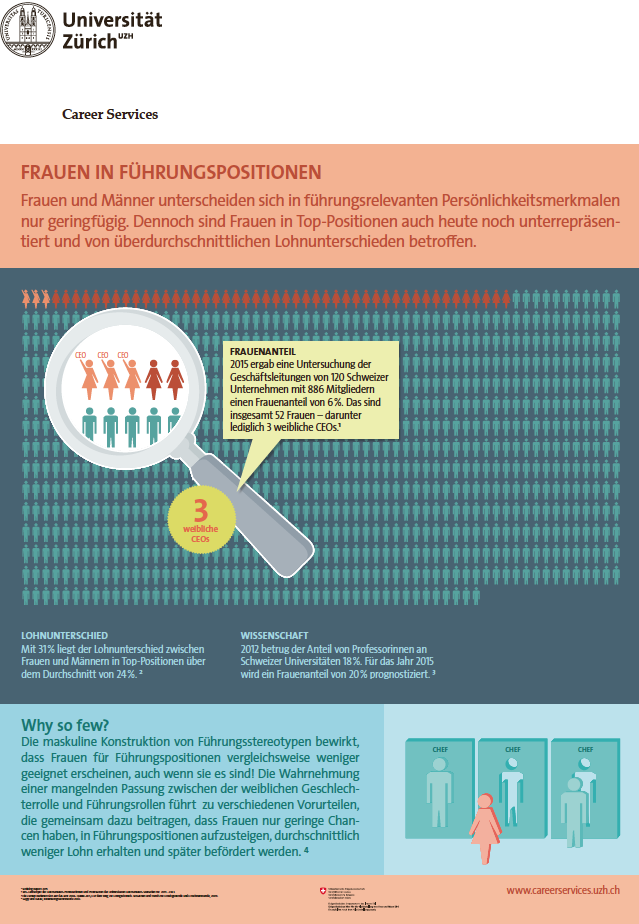Equal Opportunity
Table of contents
In the course of your professional life you will face a range of different challenges, some of which are based on gender. The more you know about these specific challenges, the better is your position to assess your professional environment and act more assertively.
Equal opportunity at work means that women and men do not face discrimination on the grounds on their gender. Working life for women and men continues to differ significantly in terms of pay category, participation rate, employment level, professional position, and preferred sectors and functions. This is why it is all the more important to be well prepared before you start out on your career. It will stand you in good stead - in financial terms too.
One of the most comprehensive information sources on equal opportunity can be found at www.equality.ch , the website of the Swiss Conference of Gender Equality Delegates.
Workforce Participation Rate Based on Age
Until their mid-20s there are no significant differences between the employment rate of women and men. From their mid-20s however, the employment rate of women is behind that of men. This is partly due to family planning and raising children, and partly because women retire earlier from work than men.
You can find more information on theeconomic activity rate by age and gender on the website of the Federal Statistical Office.
Employment Level Based on Gender
To this day, part-time work is a feature of female employment. Although increasingly more men want to work on a part-time basis, they often hesitate to actually take the step, as part-time work is still often viewed as the best way to end your career. For one, part-time work is often associated with insecure working conditions, poorer social insurance cover (e.g. pension fund), and also fewer opportunities for continuing education and career development.
Share of Employment Levels in Couples with Children
In couple households with child(ren) it is still very common that the father works full-time and the mother works part-time.
Men with smaller children are still predominantly employed full-time.
The more childcare places are available, the more mothers work full-time. At the same time, more childcare places also mean that men reduce their workloads, which can be attributed to the relief from financial responsibility. The potential reduction in full-time employment of fathers corresponds approximately to the potential increase in full-time work of mothers.
Childcare Facilities
Childcare facilities lead to a higher balance in employment levels and more choices for both genders,
i.e. they ease the pressure on men and boost career opportunities for women. On an international scale, there is a massive lack of affordable childcare in Switzerland. Affordable childcare enables couples to share their work and family responsibilities on a more partner-like basis.
The unequal distribution of paid labor, housework and family care stems from traditional gender role patterns that are reinforced by limited childcare facilities and salary discrimination. When following traditional roles, women end up with less professional experience, lower pay levels, and reduced pensions.
Individual Life Patterns
In actual fact, men and women are not so different. The idea of differing behavior results from seeing genders in their social roles. However, these social roles are changing which means that while traditional roles still have their place in many people’s life patterns, in others’ they have all but disappeared.
Social Roles
In the course of civilization, activities needing muscle strength resulted in a distribution of labor based on physical attributes. This led to the establishment of societal gender hierarchies with women in the role of homemaker and men in the role of provider. However, with technological developments and a growing services sector, new forms of work have arisen that require more intellect than muscle.
Nevertheless typical role models stick stubbornly in people’s minds and don’t conform with the realities of contemporary working life and society. Women continue to be unfairly rated on the basis of their gender as less suited to leadership positions than men - even when leaders themselves!
Gender Roles
Purely on the basis of gender, men and women are subject to society’s common expectations of behavior that indicate what is appropriate conduct for men and women. In socialization processes, they acquire the role-related skills, abilities, and characteristics required for gender-specific behavior patterns. Ultimately, gender-specific behavior patterns only become stereotypical for each gender because gender roles influence social behavior. In other words, because people build gender norms and stereotypes into their self-concept and act and decide accordingly.
Gender Stereotypes
Gender stereotypes are based on shared assumptions that define which psychological features common to men and women are advantageous in gender-typical activities. These stereotypes not only influence behavior intrinsically but also have a regulatory influence from outside (e.g. through other people’s disapproval or social sanctions). The masculine structure of leadership stereotypes, for example, means that women appear less suited to leadership positions - even when they are leaders themselves! The fact that people see a lack of compatibility between the female gender role and leadership positions leads to a number of prejudices that ultimately result in low chances for women to reach leadership positions, lower salaries on average, and deferred promotions.
Women in Leadership Positions
Although men and women only differ slightly in their leadership characteristics, women are underrepresented in management and decision-making positions and subject to above-average pay inequality. In her TED talk, Sheryl Sandberg looks at why it is more difficult for women to attain top positions and talks about the inner and outer obstacles that make climbing the career ladder more difficult for women.




